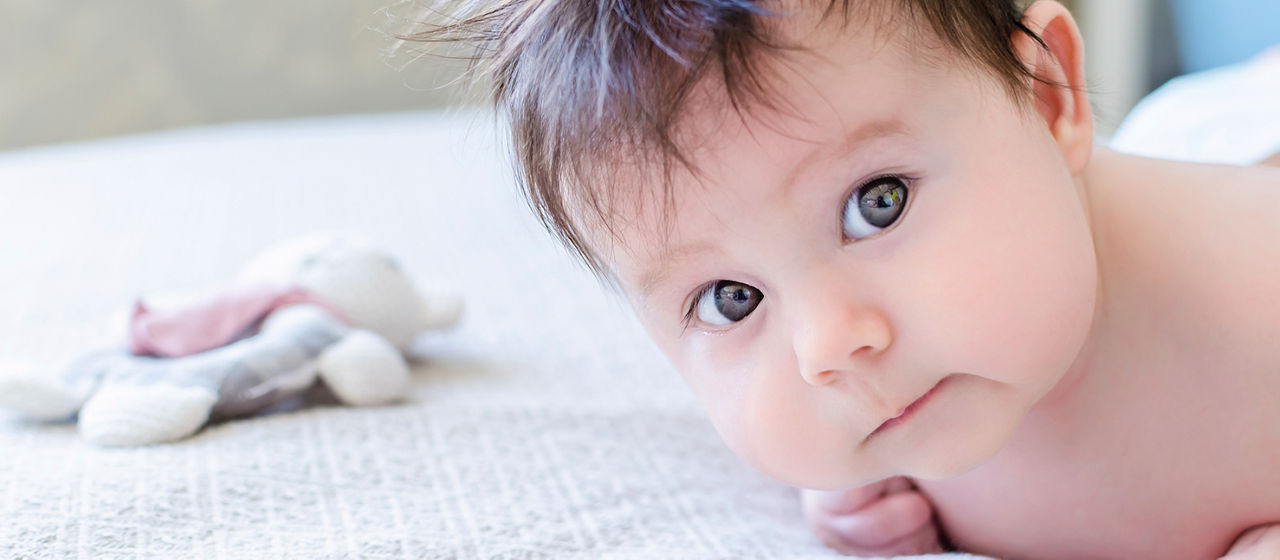Breastmilk is the best for babies. The World Health Organisation recommends exclusive breastfeeding for the first six months of life. Unnecessary introduction of bottle feeding or other food and drinks will have a negative impact on breastfeeding. After six months of age, infants should receive age-appropriate foods while breastfeeding continues for up to two years of age or beyond. Consult your doctor before deciding to use infant formula or if you have difficulty breastfeeding.
Eyesight is important to your baby’s ability to coordinate full-body movements such as standing and walking. Knowing the milestones of your baby's visual development, and what you can do to help it along, can ensure your little one is seeing properly and enjoying his world to the fullest.
Six months
- Depth perception begins to develop, which means the eyes work together to start forming a three-dimensional view of the world.
- Visual acuity improves from about 20/400 at birth to approximately 20/25 at six months of age.
- Color vision is almost similar to that of an adult, which means your baby can see all the colors of the rainbow.
Tips: This would be a great time to take your baby to an eye doctor, to have his very first children’s eye exam. The doctor will check the health of your baby's eyes and look for anything that might interfere with normal and continuing vision development.
Six to eight months
- Control of eye movements and eye-body coordination skills continue to improve. Your baby will be able to pick up dropped objects and accurately direct things into his mouth.
- Around this time, more dark pigment is produced in the iris which can cause the eye color to change.
- Crawling starts at around 8 months, which helps further develop eye-hand-foot-body coordination.
Tips: Give your baby enough time to explore on the floor. As you encourage him to crawl, place his favorite toy just out of his reach and encourage him to get it as well. Provide plenty of objects and toys that he can take apart and put together.
Nine to twelve months
- At nine months of age, babies may begin to pull themselves up to a standing position. By 10 months, a baby should be able to grasp objects with thumb and forefinger.
- Better sight skills start to develop, such as staring at small objects and watching objects that are moving fast.
- Your baby can now judge distances fairly well and throw things with precision.
- Your baby may start to recognize himself in the mirror, and when he does, he may try to reach out and touch it.
Tips: Get down on the floor with your little one as you encourage him to crawl to objects. Play hide-and-seek games with toys or your face to help develop visual memory. Name objects while pointing to each one to encourage word association and vocabulary development skills.
Join our AptaAdvantage Club today to enjoy:
- Educational content to support you on your motherhood journey
- Various complimentary classes and exclusive discounts with our key enrichment partners
Kickstart your AptaAdvantage experience by signing up HERE.
Related articles

Connect with our team of experts
We provide advice and support for you on your parenthood journey




